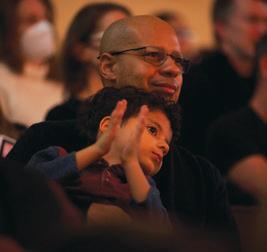

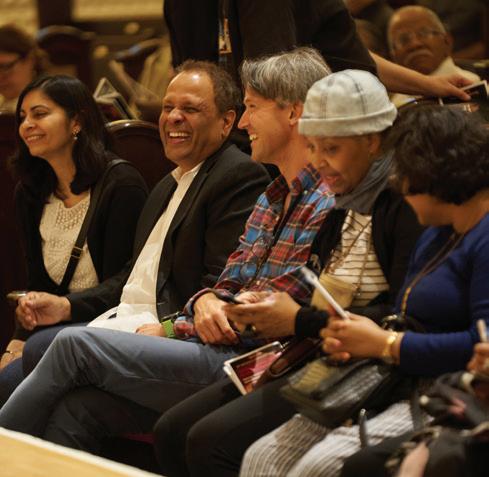


Matthew Hagle: “Jesters and Gargoyles”
November 8, 2025

S
E A S O N S P O N S O R S








Matthew Hagle: “Jesters and Gargoyles”
November 8, 2025

E A S O N S P O N S O R S


The Music Institute of Chicago is grateful to all its funders and partners, whose generous support helps us to educate, entertain, and inspire through live music performed by both new emerging artists and the most established artists of our time.
The Music Institute of Chicago is grateful for the support of these annual institutional supporters: Paul M. Angell Family Foundation, Edwardson Family Foundation, John and Pauline Fife, John R. Halligan Charitable Fund, ITW, The Julian Family Foundation, The Kiphart Family Foundation, William Harris Lee & Co., The Negaunee Foundation, Alexandra C. and John D. Nichols Family Foundation, Northern Trust, Sargent Family Foundation, Shure, and The Wallace Foundation.

The Music Institute also acknowledges the generous support of the Evanston Arts Council, a city agency supported by the City of Evanston; the Farny R. Wurlitzer Fund from the DeKalb County Community Foundation; the Highland Park Community Foundation; the Illinois Arts Council, a state agency; and the National Endowment for the Arts, a federal agency.

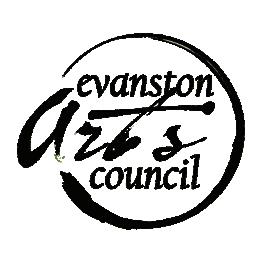
Sponsorship opportunities range from concerts and performances, to the annual Gala, special capital projects, and community engagement initiatives. For more information contact:
Jennifer Bienemann, Vice President and Chief Development Officer
at jbienemann@musicinst.org.

Welcome to the Music Institute of Chicago (MIC) and Nichols Concert Hall!
We are excited to begin our 2025-2026 “Nichols Concert Hall Presents” season with esteemed pianist, faculty member, and alumnus Matthew Hagle. Matt has a wonderful program ready for you!
Attending a performance at Nichols Concert Hall is a singular experience. Immersing oneself in the talents of world-class performers amidst the backdrop of the awe-inspiring architecture and impeccable acoustics of Nichols Concert Hall provides a genuine feast for the senses. This is live music at its best!
From our unique annual “Duke It Out!” Nutcracker show, to our Martin Luther King, Jr. Community Celebration, to our One Composer, One Community concert later this spring, there is something for everyone to enjoy. We encourage you to share your Nichols Concert Hall experience with friends, family, and colleagues and join us throughout the year.
In addition to our “Nichols Concert Hall Presents” series, we are proud to partner with five Resident Ensembles: Apollo’s Fire, Chicago a cappella, Civitas Ensemble, The Orion Ensemble, and Rembrandt Chamber Musicians. New this year, we have also welcomed worldclassmusic.live a Resident Company who brings world music to the programming mix. For more information about upcoming concerts, please visit nicholsconcerthall.org.
This concert series is only one part of our mission here at the Music Institute. As a top-tier community music school, we offer music lessons and classes to more than a thousand students of all ages and levels each year. We are also deeply committed to making music and music education accessible to people and communities who might not otherwise have access. Learn more about Music Institute of Chicago activities and opportunities by visiting us at musicinst.org.
We look forward to seeing you and your friends throughout the year!

Pianist Matthew Hagle is a musician of great versatility and depth, whose performances are a rare mixture of musical understanding, imaginative programming, pianistic command and beauty of sound. In solo performance he often tries to shed new light on the piano repertoire, using thoughtful programming and committed performance to present lesser-known works and to illuminate the traditional canon. In a more conventional vein, he has also performed all of Beethoven’s 32 piano sonatas and the complete later pieces of Brahms in two series of live radio recitals. Hagle is also highly valued as a collaborator by many other artists. With violinist Rachel Barton Pine, he has released three acclaimed CDs on the Cedille label, and performed many recitals in North and South America. His piano duo performances with Mio Isoda-Hagle have been highlights of the annual Chicago Duo Piano Festival. Other chamber music partners include the Parker Quartet, the Avalon Quartet, Quintet Attacca, and members of the Chicago Symphony Orchestra.
Matthew Hagle has been heard in concert halls throughout the United States, including the National Gallery of Art in Washington D.C., Symphony Space in New York, and in concert at the United States Supreme Court. Outside of the U.S., he has performed at venues in England, Canada, Brazil, Australia and Japan. A resident of the Chicago area, Hagle performs frequently at local spaces including the Ravinia Festival, Symphony Center, and the Chicago Cultural Center. Hagle can often be heard on radio station WFMT in Chicago, and has also been heard on NPR’s Performance Today and Minnesota Public Radio’s St. Paul Sunday Morning programs. Among others, the New York Times has described him as “a sensitive pianist,” Clavier magazine praised the “rare clarity and sweetness”of his playing, and the Springfield (MA) Republican remarked that he “played with unaffected brilliance and profound understanding.” Hagle’s performance of Elliott Carter’s Piano Sonata in the Sydney International Piano Competition received special notice and favorable commentary in Australian national radio’s coverage of the competition.
Saturday, November 8 at 7:30 pm
Special support for this concert provided by John and Kathy Piepgras
Sonata in G Major, Op. 31 No. 1
Ludwig van Beethoven
Allegro vivace (1770-1827)
Allegro vivace
Adagio grazioso
Rondo: Allegretto
Suite, Op. 14
Béla Bartok
Allegretto (1881-1945)
Scherzo
Allegro molto
Sostenuto
Le Festin d’Ésope
Charles-Valentin Alkan (1813-1888)
Four Scherzi Frédéric Chopin
Scherzo No.1 in B minor, Op. 20 (1810-1849)
Scherzo No. 2 in B-flat minor, Op. 31
Scherzo No. 3 in C-sharp minor, Op. 39
Scherzo No. 4 in E Major, Op. 54
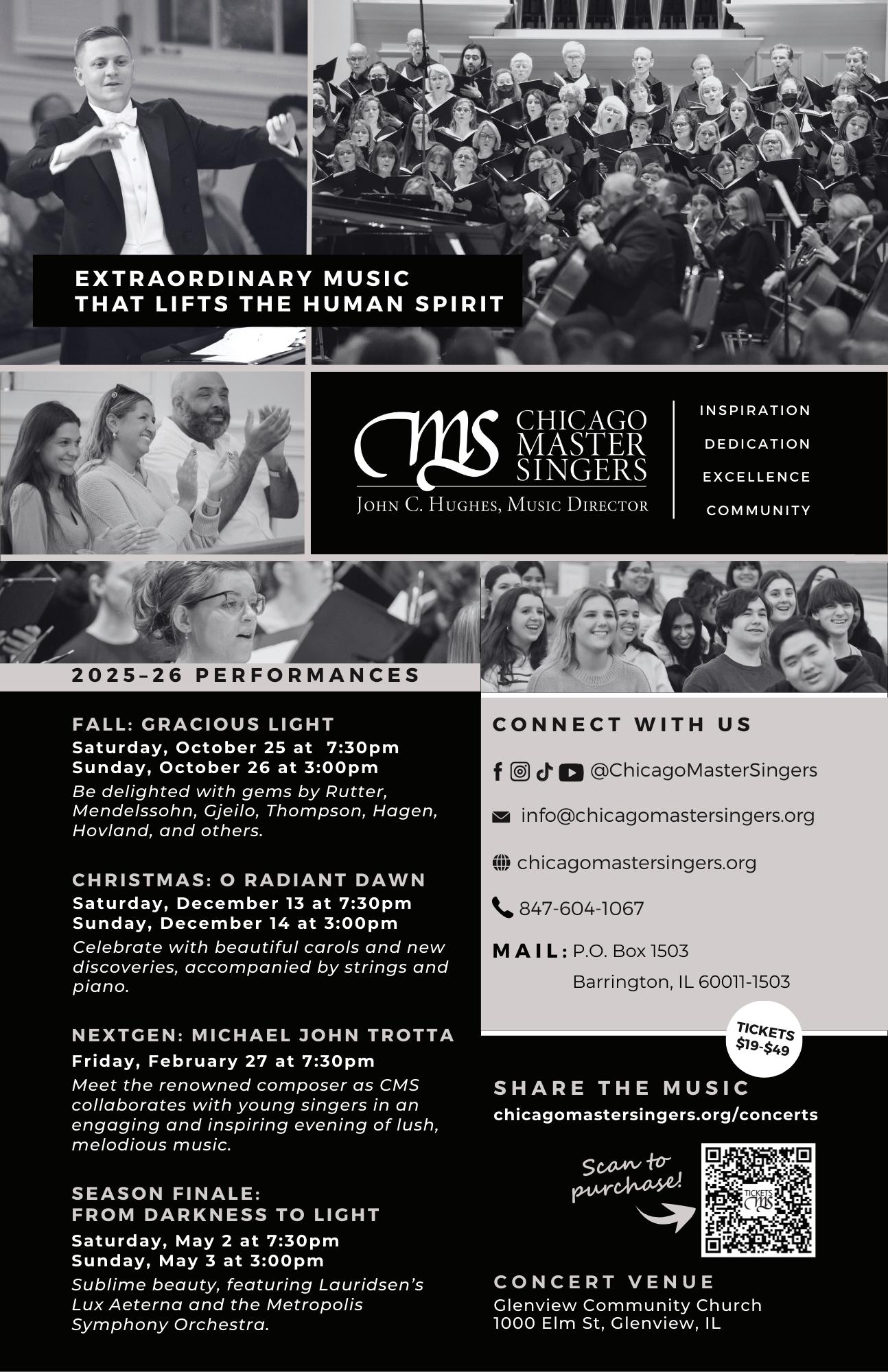
“There is no excellent beauty that hath not some strangeness in the proportion.”
~ Francis Bacon,
“Of Beauty”
444444444444444444444
Thank you all for being here with me tonight. The pieces that you will hear have some broad relationship to the ideas of humor, wit, satire, imagination, and caricature: the kind of creative distortion that often brings new ideas into being. That’s as far as I would dare to go in attempting to pin down an elusive subject. If you like, you can read numerous rather serious essays on the subject of humor in music, and, with any luck, this will not be one of them. Instead, I have four samples of the kind of thing I am talking about; whatever this quality is, these pieces all have it, in their individual ways. You can expect to hear sudden shifts of tone, unexpected combinations of notes, and, very often, the physical energy of instrumental virtuosity. Some music is lyrical or contemplative or heroic or transcendent; these pieces are carried along by their own mental and physical energy. Something unusual is always happening, or about to happen. I find it to be very energizing and I hope you will too.
Before starting, I would like to again give my great thanks to John and Kathy Piepgras, and to Shalisa Kline Ugaz, for the support they give to these recitals. Also to Kevin Harrison, Eric Desnoyers, Erin Fusco, Jill Chukerman, Vanesa Elias, and everyone else at Nichols Concert Hall and MIC who has put in work on this project. Thank you all so much! I greatly appreciate the time, energy, and expertise that you give to this.
~ Matthew Hagle
Beethoven’s Sonata No. 16 in G Major, Op. 31 No. 1 is perhaps one of his least-played and least-studied works, yet it is held in high esteem by the musicians that know it well. Why such neglect? Could it be that our image of Beethoven as a monumental creator of heroic masterpieces leaves no room for a work that is excellent in a different, unexpected direction? Op. 31 No.1 is quirky and unusual, and brings humor and misdirection to the most unlikely materials.
The first movement’s opening presents us with a strange desynchronization of the pianist’s hands, where the left hand lags behind the right in a persistent syncopated pattern. Since errant timing between the hands is a common problem for pianists of all levels, some commenters have suggested that Beethoven was making a subtle in-joke. True or not, this unusual material brings a touch of eccentricity and ambiguity to the movement, and the sudden stops and starts are used to keep the listener off balance in a manner that is similar to what Haydn had done.
The second, and longest movement, has been described as an imitation or a parody of the operatic style of Rossini. Its main melody alternates simplicity with a flurry of ornamentation that could well be an exaggeration of contemporary operatic style.
The third movement begins as a gavotte in a pastoral style. The mood is predominantly a cheerful one, but there is little humor or whimsicality until the end. Here the joke is on the audience: after a coda full of hesitations and false starts, Beethoven gives the listeners several impressive chances to clap in the wrong places, before ending the piece quietly.
nThe folksy mood is continued in the first movement of Bartok’s Suite, Op. 14. Bartok spent much time doing field research into the folk melodies of Eastern Europe; nevertheless, this Suite contains no actual folk melodies. The influence of Romanian and Arabic musics can be heard in the first and third movements respectively, but Bartok’s primary goal in writing the Suite was to “de-Romanticize “ the piano writing, making it simpler and more stripped-down. This is in line with a general musical and cultural trend towards simplicity and directness of expression, a trend which many composers of varied styles adopted in the years following World War One.
The first movement, to me, falls into the “village band” style: simple dance music that goes awry, as if someone in the band were playing wrong notes or reading the wrong clef. This style, used by composers as various as Ives and Shostakovich, is also sometimes labeled “wrong note music.”
The second movement, titled “Scherzo”, is also in a playful mood, but the gentle satire of the first movement has become something rougher and slightly more aggressive. The aggression reaches its highest point in the third movement, using drumlike, repetitive music to surge towards and away from various high points.
Moving without pause into the last movement, here the emotional tone has changed to one of thoughtfulness and sorrow. Taking the measure of the entire suite, we can see that Bartok has built a dramatic arc across all four movements, starting with humor and progressing through more disturbing emotions to end far from where he started. He uses tempo, rhythm and dissonance level to create this structure in a way that I find to be concise, controlled, and also moving.
Charles-Valentin Alkan’s name may not have the same historical ring as Bach, Beethoven, or Brahms, but fans of the piano and its repertoire have long been aware of the name, and some of the music, of this eccentric and intriguing minor master. Le Festin d’Ésope, Op. 39 No. 12, is the last in his series of “Etudes in the Minor Keys”; it is one of his most frequently played compositions. The French title translates as “Aesop’s Feast.” The reference here is to an anecdote found in the “Aesop Story,” an anonymous life of the famous author of fables. In this anecdote, Aesop, who was a slave, was asked by his master to prepare a banquet, and responded by serving the same meat (tongue, it is said), prepared in multiple ways. Alkan translated the essence of this story into music by creating first a simple, short theme, and then a series of variations that vary the theme in imaginative and sometimes outlandish ways.
Alkan, who had one of the finest keyboard techniques of his time, exploits the full range of the piano to produce unusual and colorful combinations of sound. The overall effect is fascinating but occasionally jarring as well; there is an element of excess and of caricature that exceeds what the nineteenth century found to be acceptable (though contemporaries like Chopin and Liszt were admirers of Alkan’s work). This element of grotesquerie, the technical difficulty of Alkan’s scores, and the composer’s somewhat reclusive personality all account for the eclipse of his reputation. However, performers such as Ferrucio Busoni, Egon Petri, Raymond Lewenthal, and Marc-André Hamelin created a rehabilitation of Alkan’s status, and these days he is programmed with increasing frequency.
The term scherzo, which means “joke” in Italian, already had a pedigree in musical composition at the time that Chopin wrote the first of his four. The use of this title goes back at least as far as Monteverdi and the early 1600s. In the work of Haydn and Beethoven, it came to mean a movement in a larger multi-movement sonata-style piece, in a lighter character and formally similar to the minuets that had customarily been used in these types of pieces. Chopin’s application of the title to a free-standing instrumental work, of intense emotional content and formal complexity, is unique up to that point in time, and his collection of four scherzi is unmatched by any other composer. As many have said, there is really nothing funny about most of these pieces, so the use of this title seems puzzling. But if we think of humor not as light-hearted and diverting, but as a whimsical, unpredictable, and unstable force, then Chopin’s title starts to seem appropriate. In Chopin’s output, the four Scherzi stand alongside his four Ballades as his most consistent, complex, and unique sets of large-scale works. The four pieces share a quick triple meter and a mercurial, darting sense of phrasing. Though not among Chopin’s most difficult works, they are demanding, and they use their virtuosity to great effect. In comparison with the high achievement of the Ballades, these pieces are sometimes slighted, but perhaps the comparison is not fair. The Scherzi of Chopin are not heroic poems, but are instead serious works wearing an acrobat’s disguise. These pieces take the essence of the humorous vision, a mutable and unstable one, and transform it into four different artistic shapes.
The beginning of the Scherzo No. 1 in B minor, Op. 20 demands your attention. The very first piano recital I went to, when I was rather young, had this piece on it, and I was immediately hooked. In his review of the piece, Robert Schumann (a great champion of Chopin’s work) was somewhat perplexed. In an often-cited phrase he asked, “How will gravity be dressed if jest is to go about in such dark clothes?” Truly this Scherzo has nothing funny about it, and any attempt to make sense of the title needs a broad definition of humor, as mentioned above. After the first two dramatic chords, the hyperactive figuration that follows features a melodic shape (triad plus neighbor note, moving quickly upwards) that will appear in the beginning of the first three scherzi. Of all four pieces, this one is the simplest structurally, an ABA design with much repetition of contrasting sections, within each big section. In the slower B section there is, unusual for Chopin, a quote: the opening melody of this section is a Polish Christmas carol, “Lulajze, Jezuniu,” which translates as “Sleep, little Jesus.”Chopin provides the lullaby with a hypnotic, rocking accompaniment. The pianist who plays this piece needs a sense of forward propulsion, the ability to vary the many repetitions, and of course quick and clear fingers. In common with most other big Chopin pieces, there is a brilliant ending section (coda) to finish it off.
Among the four scherzi of Chopin, the Scherzo No. 2 in B-flat minor, Op. 31 wins the popularity contest; very few advanced pianists will make it through their student years without having played or at least heard it. It begins mysteriously enough, but to me, the general mood of this piece is exuberant and extroverted compared to the first scherzo. Like that piece it is constructed in three large sections (ABA, with repeats of the first two sections and a coda at the end), but Chopin uses more melodic variety here. In the A section, the outline of sonata form is used to mold several different melodic ideas into a clear section, as his favorite Mozart had done before. The B section is more retrospective and improvisatory, also moving through music of several moods and styles before returning to the A section. Through the entire piece, Chopin moves seamlessly from one genre to another: question-answer, operatic singing, waltz figuration, etudelike piano writing are all brought to the listener with an elegance and pacing that recalls one of Schumann’s masked balls. Though starting in a minor key, by the end of the piece the mood and key have progressed, and it ends brilliantly in D-flat major, with a gesture that recalls the end of the Alkan, heard earlier.
The Scherzo No. 3 in C-sharp minor, Op. 39 also has a rather enigmatic beginning, but the mood here is more menacing than in No. 2. This is the shortest of the scherzi, but no less dramatic because of it; the repetitions of entire sections, which Chopin uses in Scherzo No. 1 and 2, are omitted here. While there is also a clear A-B-A design underlying this piece, it is less formulaic. After the introduction, the main melody is presented in a powerful series of octaves. Chopin dedicated this scherzo to his student Adolph Gutmann, a pianist more notable for power than subtlety (another student referred to Gutmann’s “prize-fighter’s fist”). The melody of this opening section also gives us a motivic conflict between two neighboring notes, G# and A, a conflict that Chopin will use and return to near the end of the piece. The contrasting B section’s melody has been compared to Wagner: a slower, chorale-like melody, it evokes the brass writing that the later composer used effectively in his operas. When the opening section returns, Chopin prevents it from fully repeating, instead returning to this chorale and developing it further. The chorale music winds down, leading to the most dramatic and, proportionally speaking, the longest coda of all the four scherzi. Though Chopin was not greatly enthusiastic about Beethoven’s music, in this piece he uses strongly contrasting materials, as Beethoven does, to create emotional drama and a fluid, creative sense of musical architecture.
With the Scherzo No. 4 in E major, Op. 54, we finally get a piece that seems to live up to the humor implied by its title. In any case, it is good-natured and whimsical, if not grotesque or satirical in the manner of the pieces on the first half. It is the most technically difficult of all the four scherzi, using quick bursts of chords and finger passagework; these are often treacherously placed, awkward for the hand and needing to be played rapidly, evenly and lightly. The phrases are quite varied, much more so than in the three earlier pieces, and the chords are more chromatic and surprising. Here we are in the land of late Chopin, music which looks forward to Saint-Saens, Wagner, Ravel, and Scriabin, among others. The formal design is A-B-A, but, as in Scherzo No. 3, not predictably so. After finishing the A section, the music attempts a repeat, but is cut off a quarter of the way through with a dramatic gesture, leading into the B section. This is a gentle barcarolle, or boat song, recognizable as such by its rolling accompaniment and the vocal melody above, which is often in a duet. The return of the A section is ushered in by a flurry of quick notes, and the music of the beginning, which had tiptoed in, returns exuberantly. Throughout the return of the A section, Chopin keeps the melodies the same, but changes small details of dynamics or accompaniment: flashes of wit to keep the listener (and pianist) off balance. The coda seems to come to a halt, and then works itself up to a brilliant ending. On the whole, this is effervescent music, which fizzes and sparkles, but is not lightweight. The sunniness of its temperament is matched by the craft of its construction and the surprise of its imagination.
Program notes by: Matthew Hagle


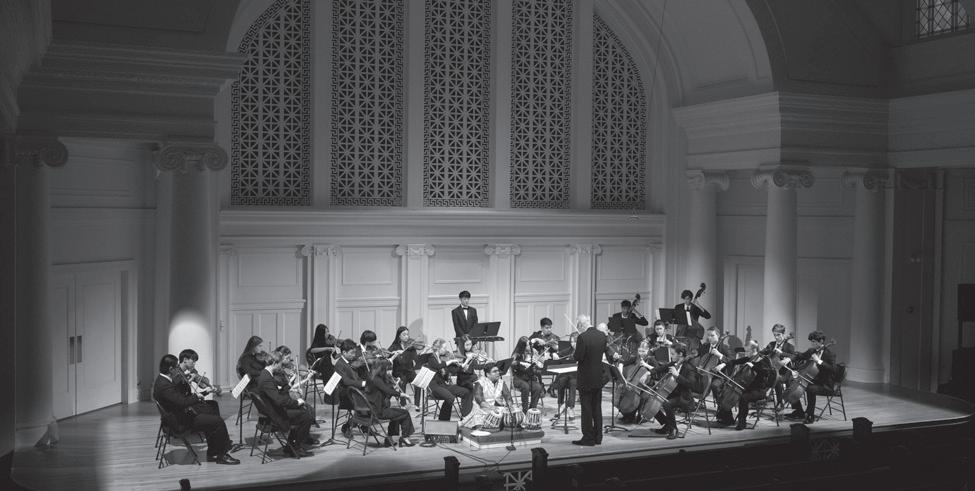
Saturday, November 15 » 7:30 PM


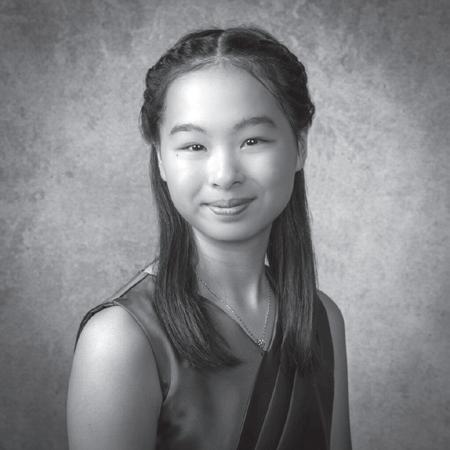
The Academy of the Music Institute of Chicago is a nationally recognized training center for highly gifted pre-college pianists and string players. Members of this award-winning chamber orchestra, under the baton of esteemed Academy Music Director JAMES SETAPEN , matriculate to the finest conservatories in the country and are recipients of national and international awards.
For more information visit: musicinst.org/academy
The Music Institute is grateful for every gift. The following friends made contributions of $5,000 or more between September 1, 2025 and November 6, 2025.
$100,000 +
The Grainger Foundation
The Negaunee Foundation
John D. and Alexandra C.* Nichols Family Foundation
$50,000 to $99,999
John and Pauline Fife
Illinois Arts Council Agency
ITW
Lori Julian on behalf of the Julian Family Foundation
Patrick G. and Shirley W. Ryan
$25,000 to $49,999
Paul M. Angell Family Foundation
Edwardson Family Foundation
J. Thomas Hurvis and Ann Andersen
Susie Kiphart
KPMG and Scott* and Areta Verschoor
Jim Stone*
$10,000 to $24,999
BMO Bank
Dr. Tanya L. Carey
Henry Crown & Company
Linda and Wilbur Gantz
GCM Grosvenor
Jackson National Life Insurance and Hans* and Denitta Germann
Mrs. Mona Golub
The Gross Family Fund Guidehouse
Karen Z. Gray-Krehbiel and John H. Krehbiel, Jr.
Dan* and Yoo Mi Hahn
Caryn and King Harris
Irving Harris Foundation
Courtney Holohan* and Wesley Mueller
Nancy D. Judge
Ethelle Katz
Jim and Kay* Mabie Family
Shiraz* and Vijay Kotte
Yana Nedvetsky* and Axel Vargas
Sylvia M. Neil and Dan Fischel
Brenna and John D. Nichols, III
Northern Trust Corporation
Cathy and Bill Osborn
Renée Parquette*
Timothy Patenode* and Judy Royal
Vikram K. Raghavan* and Shruthi Atmaram
Scott and Nancy Santi
Sargent Family Foundation
Barbara* and Peter Sereda
Mrs. Barbara Ann Speer
Liz Stiffel
Lee Anne* and Rich Stoddart
The John Taylor Family
Karen and Zalman* Usiskin
The Wallace Foundation
Kendra and Thys Wallace
Wintrust Commercial Banking and Carlos R. Cardenas*
Mr. Miles D. White
Zhu Family Fund*
$5,000 to $9,999
Rita and John Canning, The Canning Foundation
Thomas and Patricia Gahlon
Paul Galvin Memorial Foundation
John R. Halligan Charitable Fund
Highland Park Community Foundation
Erin and Wellington Hsu
Jane Irwin
Karen and Mark Koulogeorge
Swati and Siddharth (Bobby) Mehta
Thomas R. Penrose and Michael E. Whitmore
Nancy and Marc Poggioli
Segal Family Foundation
Melanie and Christopher Thomas
Ross* and Emily Parker Updegraff
Audrey Weaver
The Farny R. Wurlitzer Foundation
Florian Zettelmeyer* and Meghan Busse
Dr. Scholl Foundation * MIC Trustee

Whether you are learning an instrument for the first time, returning after a long hiatus, or just wanting to brush up on your musical skills, the Music Institute of Chicago (MIC) welcomes you!
• Rolling registration
• Flexible scheduling for busy adults
• Personalized teacher placement process with an expert music educator to ensure the best student-teacher match

• Deeply discounted musicianship classes, complimentary tickets to select performances at Nichols Concert Hall, and free master classes featuring renowned visiting artists
• Performance opportunities at beautiful Nichols Concert Hall and throughout Chicagoland
Meet a friendly, vibrant, and supportive community of adult music learners! Take one of our classes or join an ensemble.
• MIC Chamber Winds
• MIC Concert Band
• MIC Chorale
• Chamber Music
• Listening to Music (Virtual)
• Baroque Trio Sonatas
• Jazz Studies - Combos
• Adult Musicianship Program
• Online Suzuki Teacher Training
• Alexander Technique for Musicians
• Guitar and Ukulele classes



The Music Institute of Chicago is pleased to host five resident ensembles and, new this year, worldclassmusic.live, a Resident Company who brings world music to Nichols Concert Hall for the 2025-2026 season.
These partnerships showcase the breadth and depth of great music-making in Chicago and beyond and compliment the Music Institute’s “Nichols Concert Hall Presents” series and robust calendar of Music Institute of Chicago faculty and student performances and events. In addition, these resident ensembles expand enrichment opportunities available to Music Institute of Chicago students through master classes and other educational offerings.

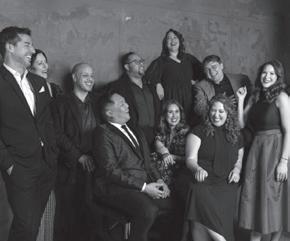
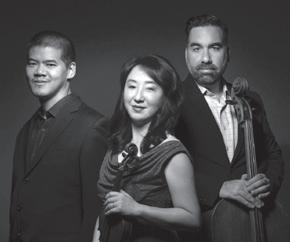


GRAMMY® winners Apollo's Fire, led by Jeannette Sorrell, are renowned for their passionate and historically informed performances of Baroque music.
Chicago a cappella is a dynamic group known for their innovative arrangements and impeccable harmonies.
Civitas Ensemble is a leading chamber music group whose repertoire spans four centuries of music history and numerous genres and styles, including newly commissioned works.
The Orion Ensemble is a renowned chamber music group known for their exciting interpretations of standard repertoire and their commitment to introducing audiences to rarely performed masterpieces.
Rembrandt Chamber Musicians features a trio of highly accomplished Chicago musicians who perform an expansive repertoire, ranging from baroque classics to contemporary works by local composers.

Timothy Patenode, Chair
Alexandra C. Nichols, Chair Emerita
Hans Germann, Treasurer
Barbara Sereda, Secretary
Carlos R. Cardenas, Vice Chair
Shiraz Kotte, Vice Chair
Lee Anne Stoddart, Vice Chair
Saurab Bhargava
Paul Brourman
Daniel Hahn
Courtney Holohan
Kay Mabie
Yana Nedvetsky
Renée Parquette
Vikram Raghavan
Jim Stone
Ross Updegraff
Zalman Usiskin
Scott Verschoor
Audra Wilson
Florian Zettelmeyer
Tao Zhu
John J. Berwanger
Mitzi Freidheim
Brooks Morgan
Rachel Barton Pine
Priscilla F. Richman
William N. Topaz
Robert Chen
Roberto Diaz
Peter Dushkin
John and Fran Edwardson
James Ginsburg
Wu Han
Jennifer Koh
Nina Kraus
Cathy and Bill Osborn
Marcus Roberts
Deborah F. Rutter
Scott and Nancy Santi
Rick and Cate Waddell
Christopher Rintz
Shalisa Kline Ugaz
Shalisa Kline Ugaz
President and Chief Executive Officer
Sue Polutnik
Vice President and Chief Operating Officer
Academy Executive Director
Emily Abraham
Vice President and Dean of Academic Affairs
Marcia Rubin
Vice President and Chief Financial Officer
Jennifer Hanson
Vice President and Chief Marketing Officer
Jennifer Bienemann
Vice President and Chief Development Officer
Kevin Harrison
Director of Operations, Nichols Concert Hall
Eric Desnoyers
Associate Director of Operations, Nichols Concert Hall
The board, administration, and faculty work diligently to further the MIC mission while dealing with the day-to-day needs of those we serve. Please do not hesitate to contact us with your ideas, questions, or concerns.
Main Administrative Office • 622 Davis Street, 4th Floor • Evanston, IL 60201 Phone: 847.905.1500 • musicinst.org

Saturday, November 15 at 7:30 PM
Academy Orchestra Concert
Sunday, November 16 at 5 PM
String Departmental Recital
Saturday, November 22 at 4 PM & 6:30 PM
Voice Departmental Recitals
Sunday, November 23 at 3 PM
Music Institute Chorale Concert: Exultate Deo
Wednesday, December 3 at 8 PM
The Arab Blues
Presented by worldclassmusic.live
Friday, December 5 at 7:30 PM
Civitas Ensemble presents: Woodwinds in Winter
Saturday, December 6 at 10 AM & 1 PM
Nichols Concert Hall Presents “Duke It Out” Nutcracker
Saturday, December 6 at 7:30 PM Academy Chamber Music Concert
Sunday, December 7 at 2 PM & 3:30 PM
Adult Student Recitals
Thursday, December 11 at 12 PM
MIC Concert Band
Thursday, December 11 at 7 PM
Chamber Music Workshop for Adults Concert
Saturday, December 13 at 7:30 PM
Chicago a cappella presents: Holidays a cappella

Sunday, December 14 at 1:30 - 4:30 PM
Piano Departmental Recitals
Saturday, January 10 at 3 PM
MIC Chamber Music Concert
Saturday, January 10 at 5 PM
Master Class with violinist Midori
Sunday, January 11 at 2 PM
MIC Chamber Music Concert
Friday, January 16 at 7 PM
Rembrandt Chamber Musicians presents: Philippe Quint plays Chausson
Sunday, January 18 at 3 PM
Nichols Concert Hall Presents: Martin Luther King, Jr. Community Celebration Concert
Sunday, January 18 at 7 PM
Winds, Brass, Percussion Departmental Recital
Wednesday, January 28 at 8 PM
Ballaké Sissoko & Derek Gripper Presented by worldclassmusic.live
Thursday, January 29 at 8 PM
Ballaké Sissoko & Derek Gripper Presented by worldclassmusic.live
Saturday, January 31 at 1 PM
Angela and Alvin Cheng Piano Master Class
FOR MORE INFORMATION VISIT: NICHOLSCONCERTHALL.ORG

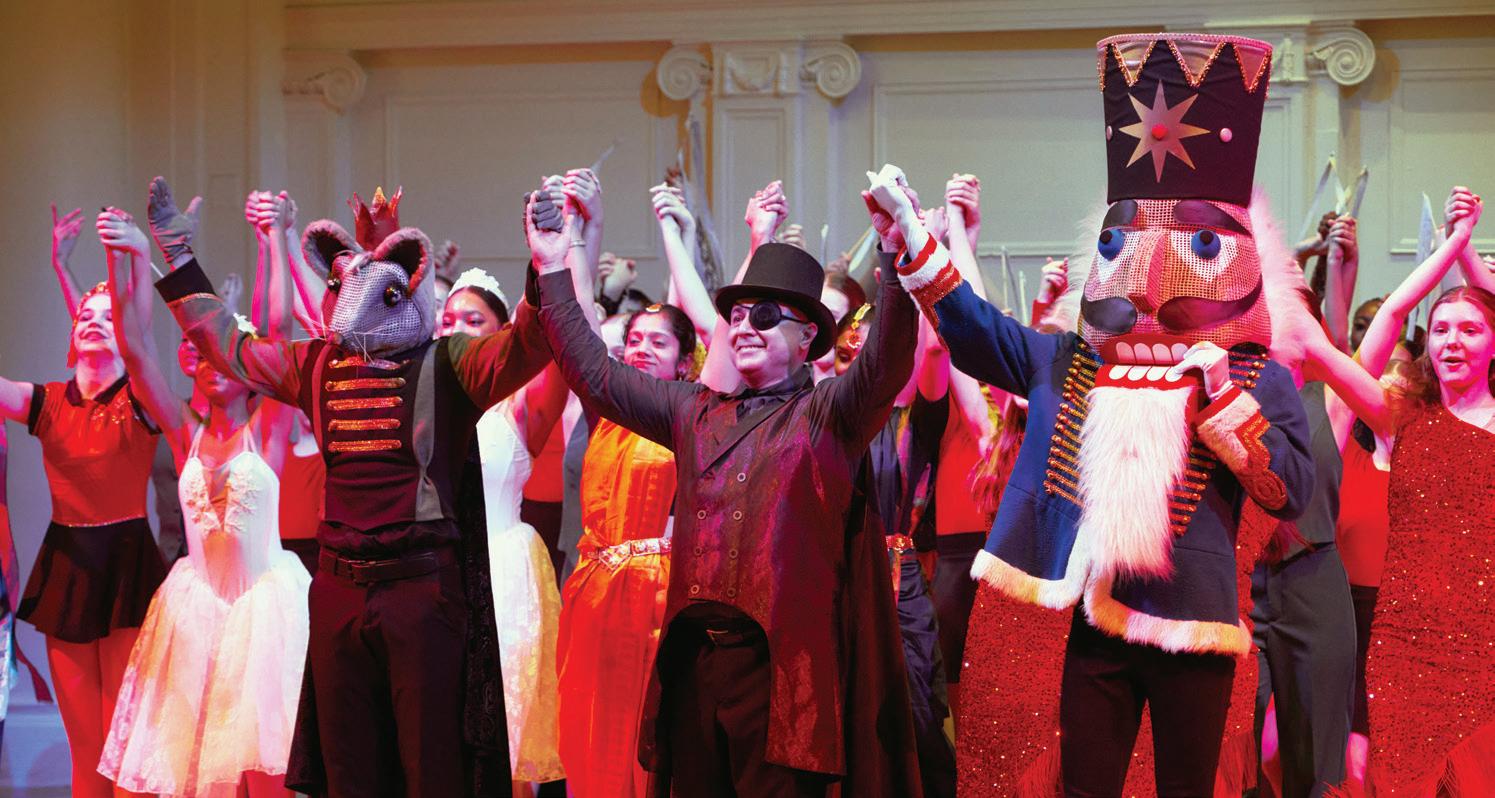
SATURDAY, DECEMBER 6 » 10 AM AND 1 PM
This unique Nutcracker production pits the classical (Tchaikovsky) and jazz (Duke Ellington/ Billy Strayhorn) versions of the holiday favorite in a side-by-side showdown. Curated by Dance Chicago, the program features members of Braeburn Brass and Music Institute of Chicago ensemble-in-residence Quintet Attacca. The performance is a family-friendly 60 minutes.
SUNDAY, JANUARY 18 » 3 PM
This annual tribute to the historic American leader features: a newly commissioned world premiere through the Hearing in Color Young Composer Residency, a choral work by Abisola Toukourou performed by Hearing in Color’s Chroma Vocal Ensemble, young artists from Chicago Musical Pathways Initiative, visual art display coordinated by the Evanston Art Center, and more!


Tickets: $20
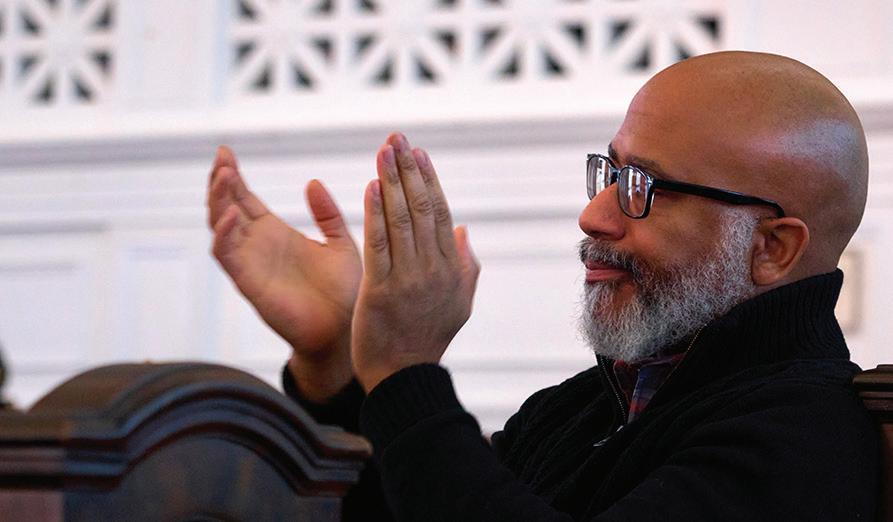
Free, public performance.